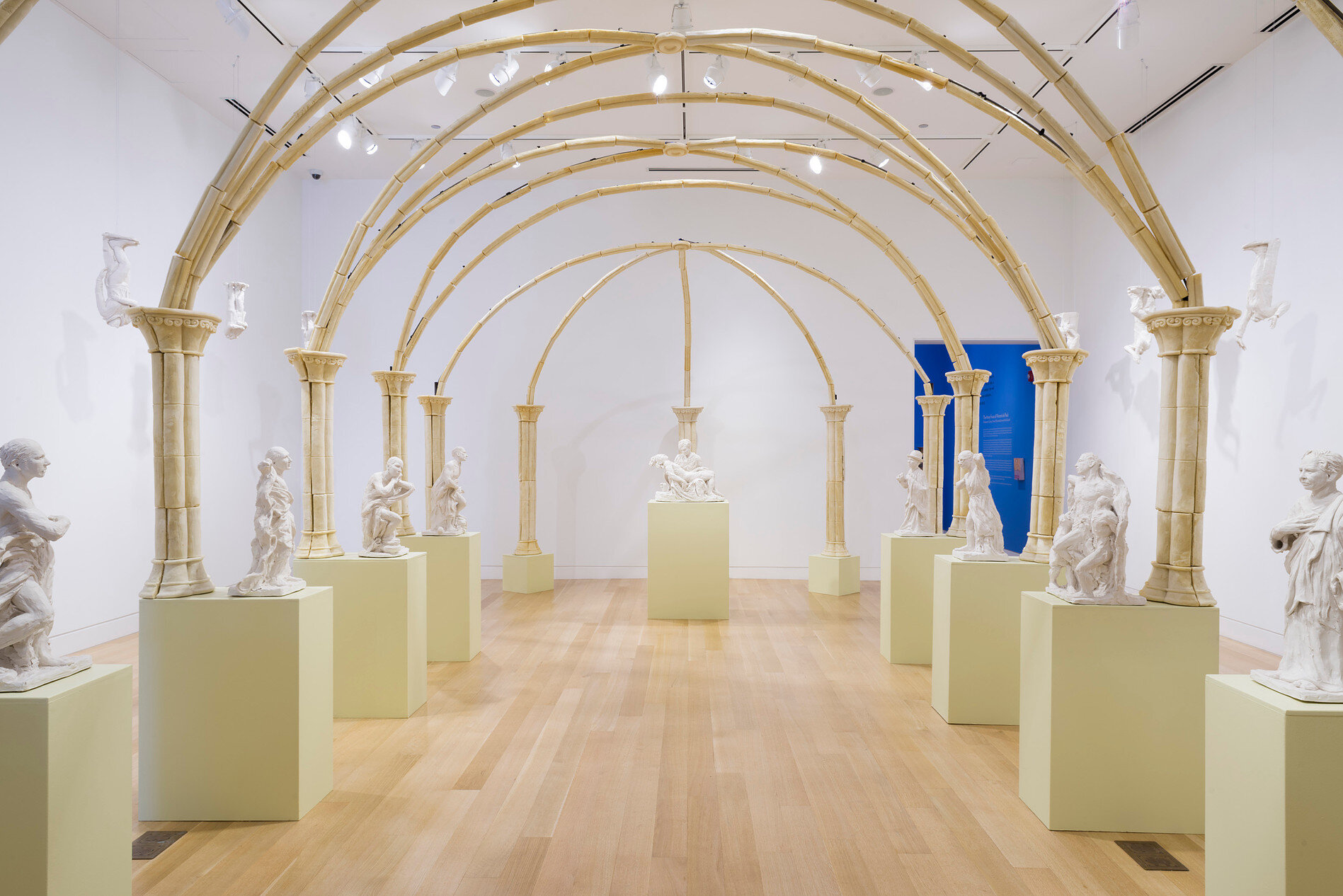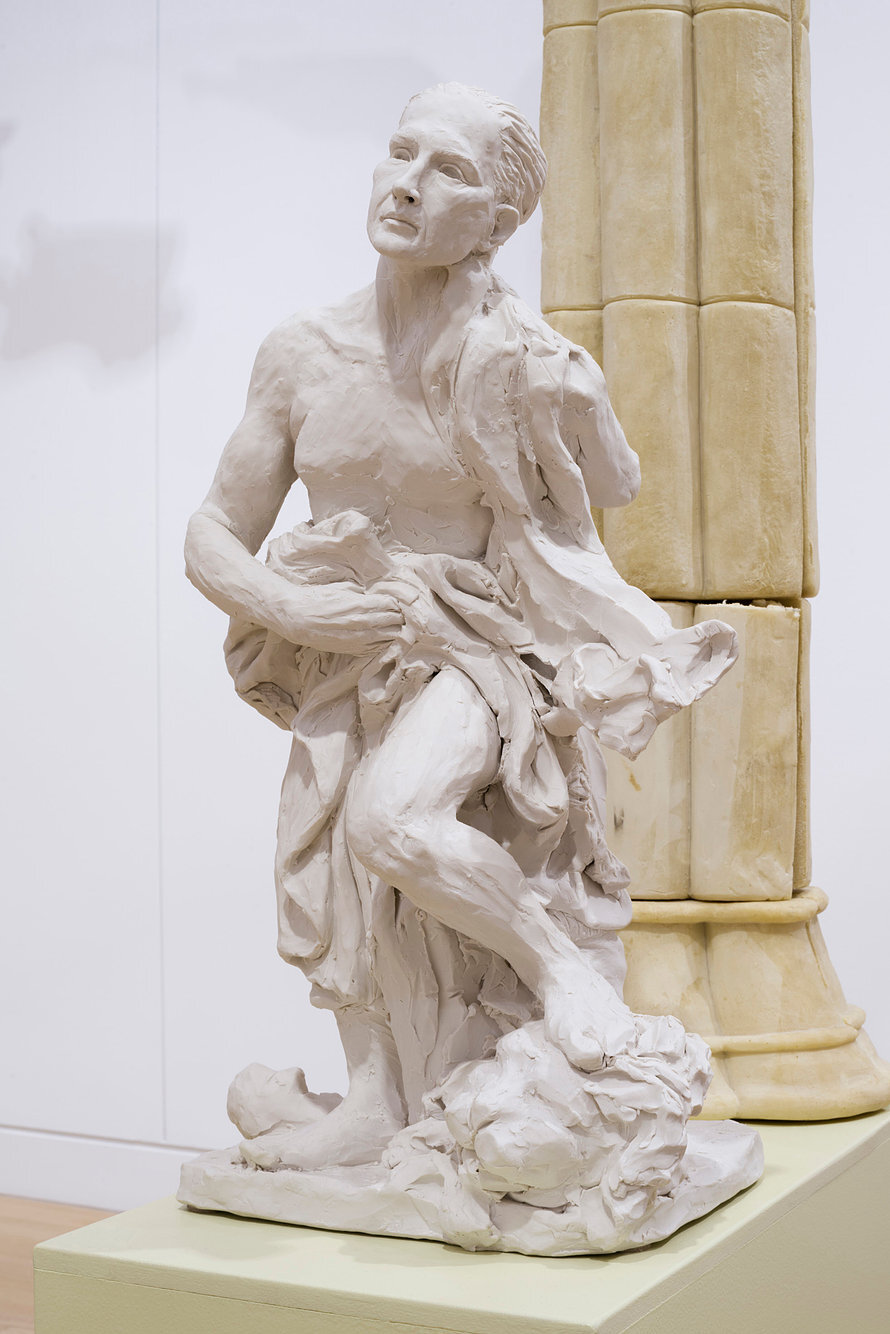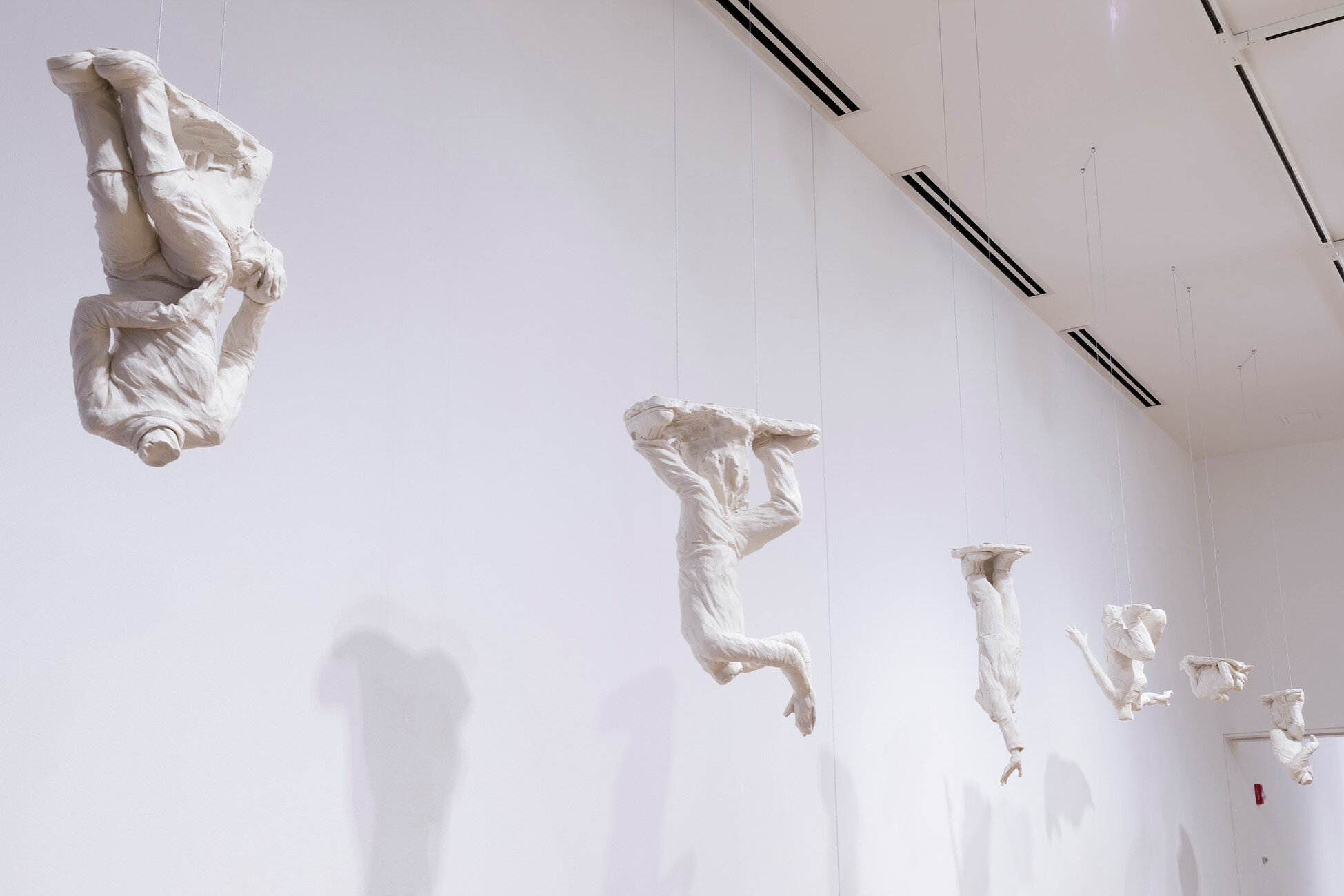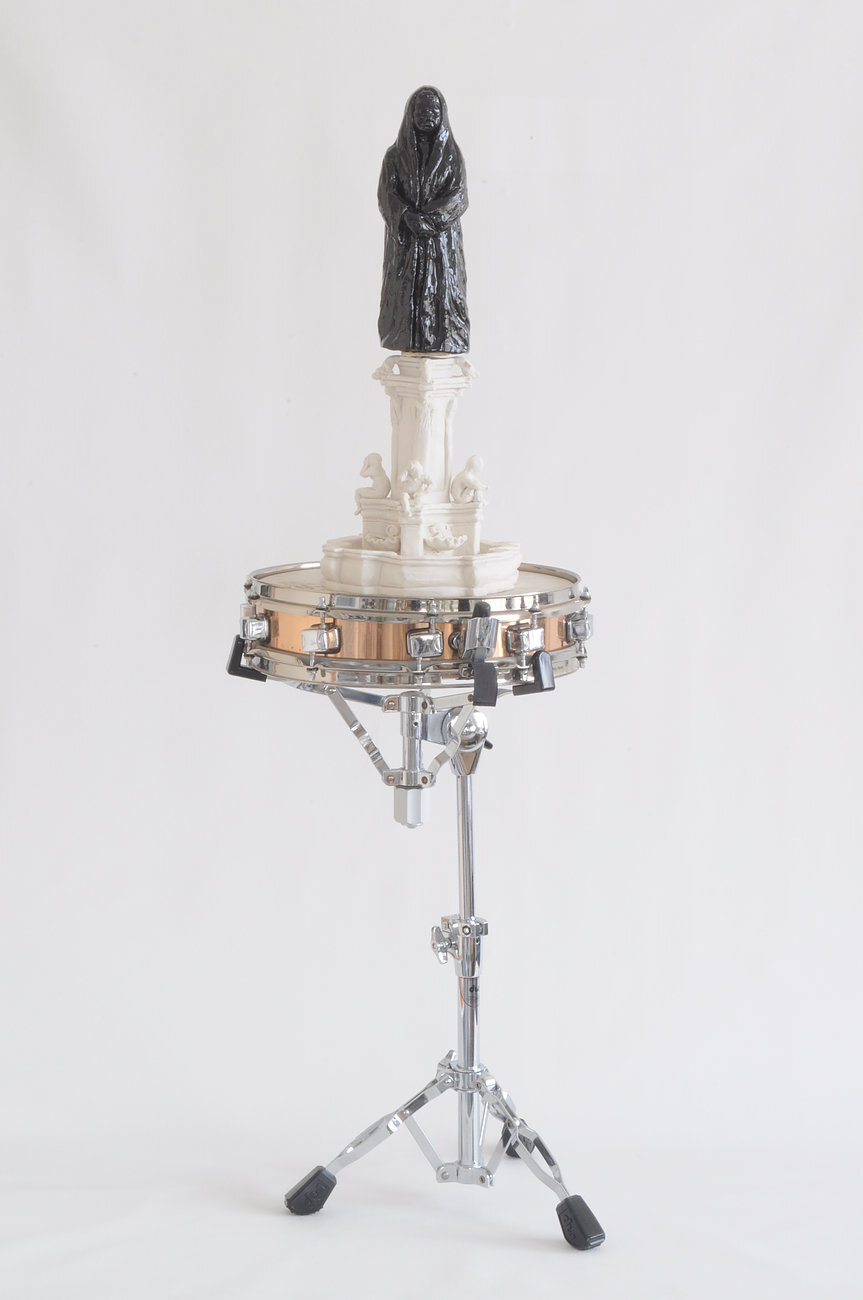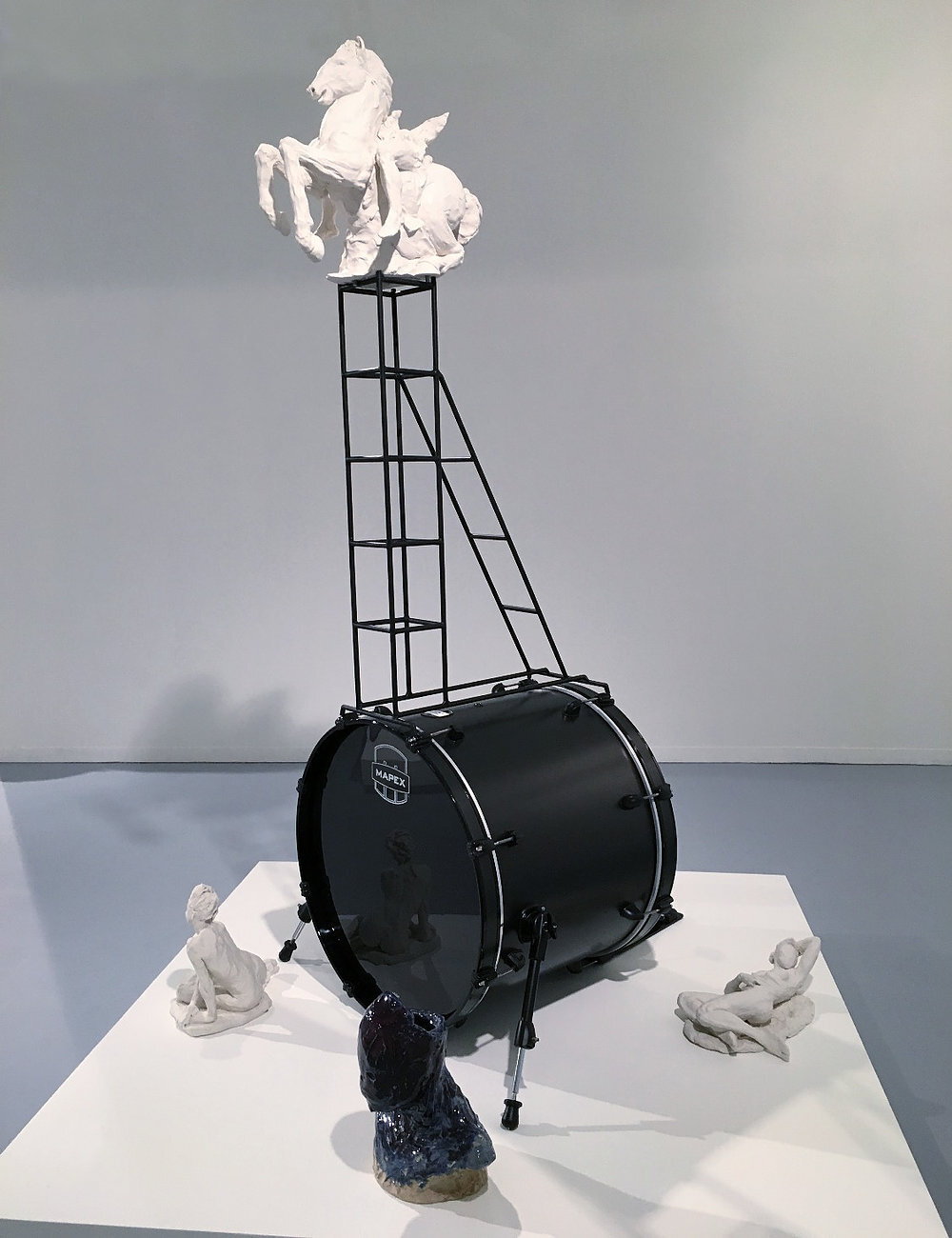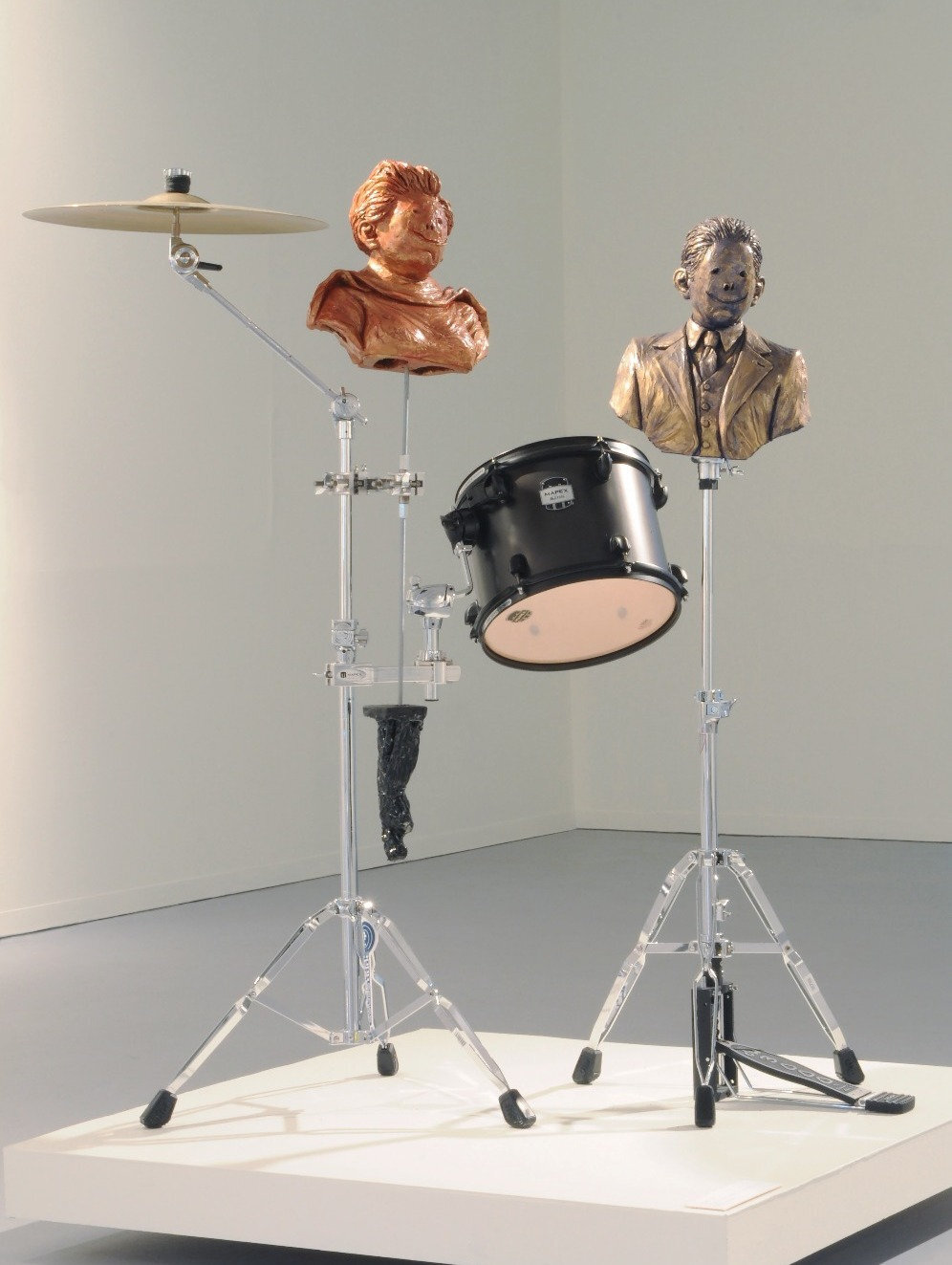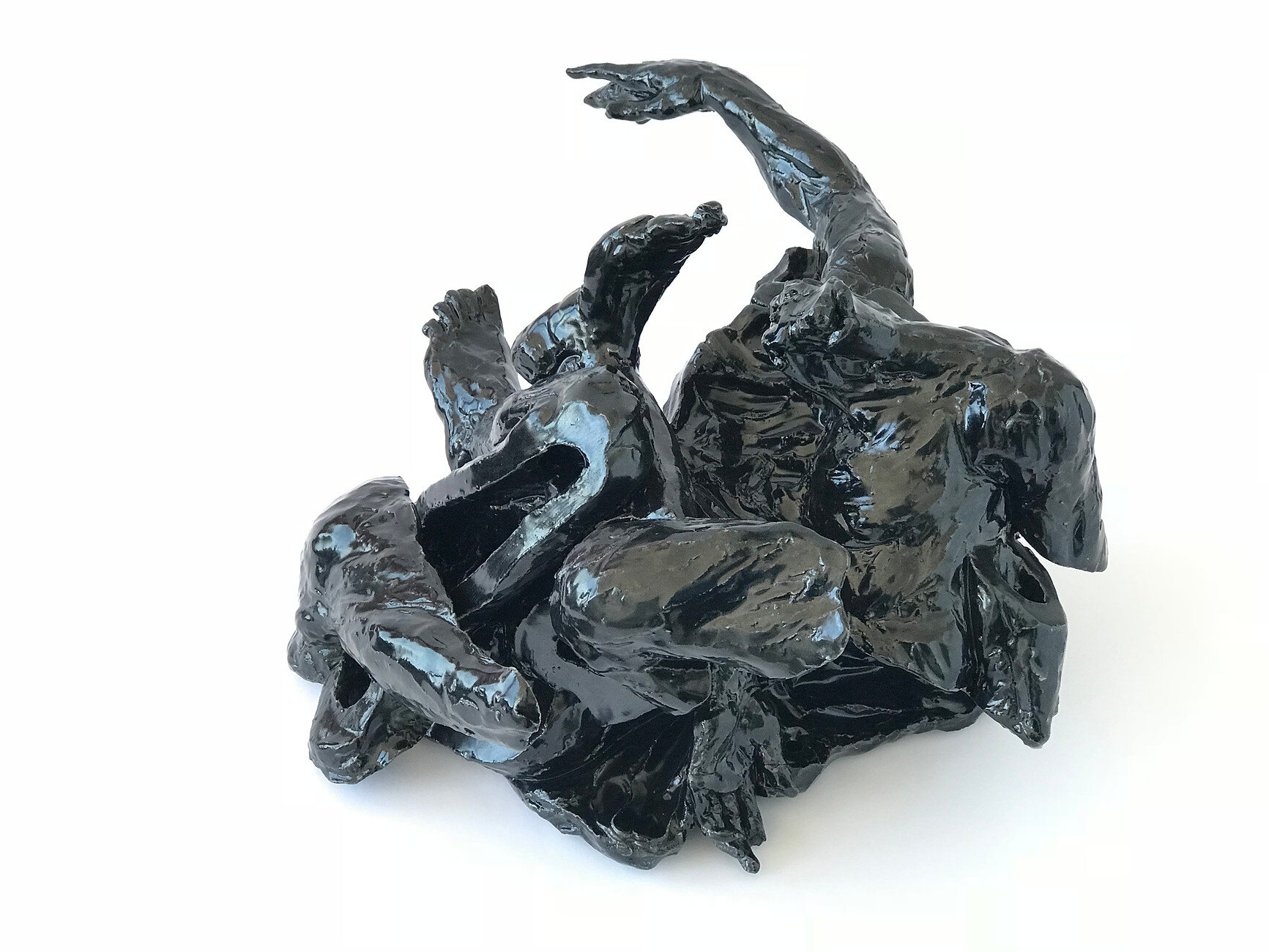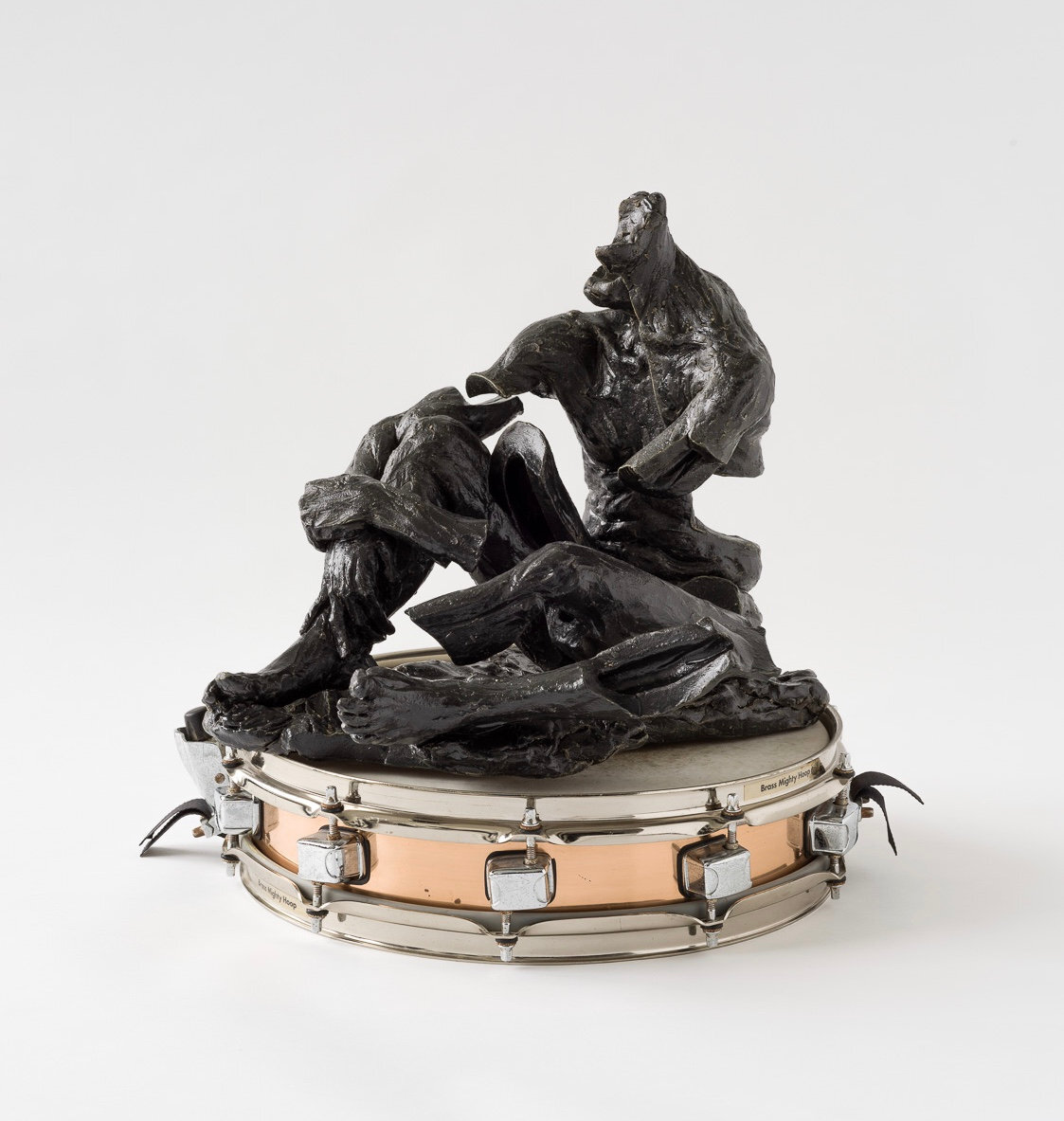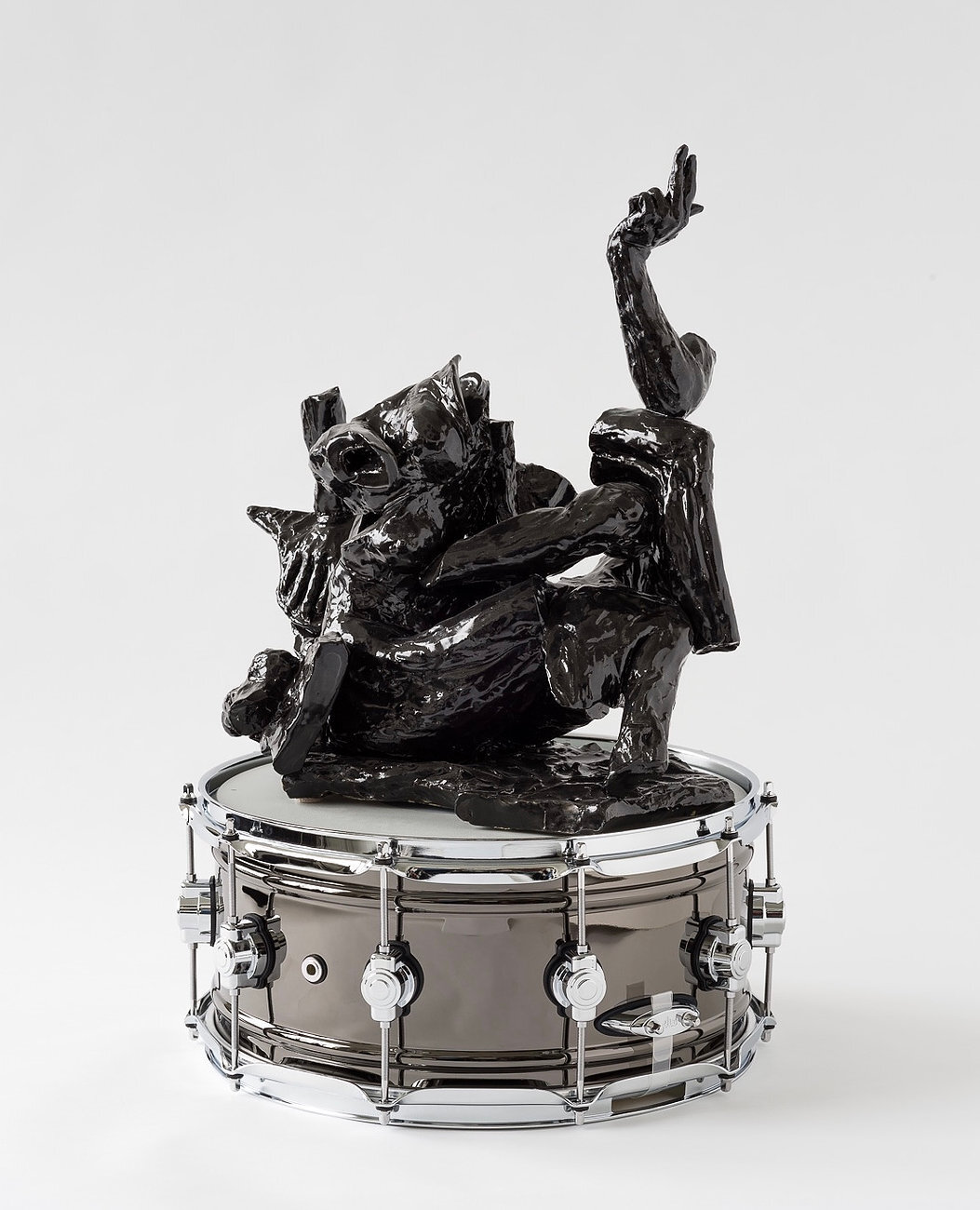Q&A: Rodrigo Lara
By Rafael Soldi | October 7, 2021
Born in Mexico in 1981, Rodrigo Lara Zendejas received an MFA from School of the Art Institute of Chicago (SAIC) in 2013 and his BFA, Summa Cum Laude, from the Universidad de Guanajuato in Mexico in 2003. Lara has had solo exhibitions at institutions such as the Museo de Arte Moderno in the state of Mexico; Museo de la Ciudad in Querétaro, Mexico; Hyde Park Art Center in Chicago; the National Museum of Mexican Art in Chicago; C.G. Boerner in New York City; Centro cultural Ignacio Ramírez El Nigromante in San Miguel de Allende, Mexico; Kruger Gallery in Marfa, Texas; and Test Site Projects in Las Vegas, among others. He has been in such residencies as the Vermont Studio Center, ACRE, Ragdale, Mana Miami, Rogers Art Loft, and Cross Currents: Cultural Exchange. Lara has two monographs of his work, Máscaras y Artefactos and Memorials. He won the first price in sculpture at the Premio Nacional de las Artes Visuales in Mexico in 2010. He has received several awards including: Proyectos Especiales FONCA (Fondo Nacional para la Cultura y las Artes), Mexico City; Emerging Artist Grant, Joan Mitchell Foundation, New York City; Jóvenes Creadores, FONCA, Mexico City; Extraordinary Abilities Visa, U.S. Citizenship and Immigration Services; James Nelson Raymond Fellowship, 2013 SAIC Fellowship Competition; PECDA Estudios en el extranjero, Instituto Queretano de la Cultura y las Artes; International Graduate Scholarship, SAIC; and the John W. Kurtich Travel Scholarship, SAIC, Berlin/Kassel, Germany, among others. Currently, Lara lives and works in Chicago and Mexico.
Rafael Soldi: Let's start at the beginning. Can you share about how growing up in Mexico influenced the themes in your work today?
Rodrigo Lara: The concepts, materiality, and formal aspects in the work definitely come from my experiences growing up in Mexico. The idea of memorialization is extremely influenced by spending so much time looking around the municipal cemetery a block away from my parents’ house, thinking of these ephemeral memorials created for everyday people. The other important influence was being an altar boy in the neighborhood’s church for several years and eventually playing drums in the Sunday service as well. Looking at the figures of the holy family and saints, made me think of other kind of religious memorial sculptures and paintings found around the world. The poetics of the materials and the formal aspects were also sparked from observing those two places. That was a starting point, so that later on I would question myself about other religions from the beginning of human kind, and the use of materials and forms of pieces found in different time periods around the world.
RS: I'm really interest in the difference between memorials and monuments. Mainly, who are they for and who are they by. Both relate to memory, though one from a place of power, and the other from a place of love and remembrance. Can you expand more on how monuments and memorials inform your work?
RL: It is deliberatively focused towards memorials and not monuments. It is a context that was always in my interest as I mentioned on the previous question. I think Monuments are definitely more subjective and usually from a place of overthrowing groups of people, minorities or groups in disadvantage, and often times monuments relate to stealing and conquering; often times also related to twisting the reality or writing History for the own good of the dominant group or civilization.
Ephemeral Memorials
RS: In thinking about history and tradition, I also think about your formal and material choices. How do you balance this relationship between concept, form, and material?
RL: In my practice I try to think of an equilateral triangle in which each corner is occupied by concept, material, and form. For me, the work has to have an equilibrium; therefore, no matter the entry point to the piece, it should have a balanced weight in those three territories, having the viewer questioning, learning, and possibly connecting their own narratives, while recollecting and/or sparking thoughts about memorialization within that triangle.
RS: And on that note, can you expand on how you make decisions about leaving something "unfinished" or incomplete?
RL: The incompletion often seen in my practice connects to the moment of the making and also to time and our presence. Just like drawing on paper, clay has the unique potential of capturing hand gestures in space; from the active motion caught of a wooden stick stroke, to the intimacy of a finger print and/or subtle gesture of the tip of a traditional or non-traditional utensil.
Untitled 10 (Polyrhythms Series)
RS: How do you decide when a work is going to be a single sculpture or series of objects versus an immersive installation? Do you think about how a viewer's body relates to the scale of the work in making those decisions?
RL: Often times the pieces are conceived as immersive installations or even interventions to site-specific spaces in which the viewer encounters a specific idea. Other times the series of work is developed as a harmonious idea which allows me to keep investigating, questioning, and exploring endless formal options, while circumnavigating with the conceptual and material approach. Those pieces can congruently reside within the same space, but not necessarily depend on each other. Often times I think of musical methodologies, in this case I think of albums that could complement each other as a transitional investigation, but can also be appreciated and understood individually.
RS: I'd love to talk more about 'Mourning Portrayal,' primarily as it relates to memory, which we have touched on earlier. In regions that have suffered unspeakable and irrational violence, memory is crucial. When there is an imbalance of power, a proxy memory is often fabricated, but there's undeniable staying power to the memory of those who've suffered. Can you expand more on this piece? What about its fragmentation?
RL: In this particular installation the rearranged composition and negative spaces between the different elements encourage the viewer to think about these kinds of horrific spectacles that continue to affect us all on different scales. Throughout the world, groups of people are still segregated, they disappear, or are branded by stereotypes for countless political reasons. When rising up to voice and express discomfort, difference, or defiance we often still find ourselves threatened by those in charge. Even though the original reference is a photograph taken the day after the massacre happened, the idea is that any time the piece is relocated, it will not be installed in the exact same way as before.
Mourning Portrayal
Mourning Portrayal
RS: Lastly, talk to me about your connection to music!
RL: I was informally trained as a musician. I took drumming classes growing up and also, I played in a band for several years, in addition to playing in the church music group. The use of percussions or parts of them as part of the assemblage sculptures and drawings relate to my personal relationship to those objects. I also compare and contrast the intimate similarities between sculpting in clay and playing drums. In addition to that, the percussions connect to the idea of time as well, comparing the length of the vibration or sound to our own presence or timeline in this worl
RS: Thank you Rodrigo. What's next for you?
RL: I am still working on the series Ephemaral Memorials, Polyrhythms, and Paradiddle. On the other hand, since the beginning of the pandemic, I have been working on an ongoing durational performance on my grandfather’s legacy. Convictions takes place in my shared-ride vehicle, converting it into a utilitarian memorial sculpture, exhibition space, art library, and an intimate auditorium. As a result of this work, I am excited to go to MASS MoCA for a residency to create a body of work using the performance imagery, materials, videos, stories and experiences collected over a year, in addition to scheduling other national and international residencies.




